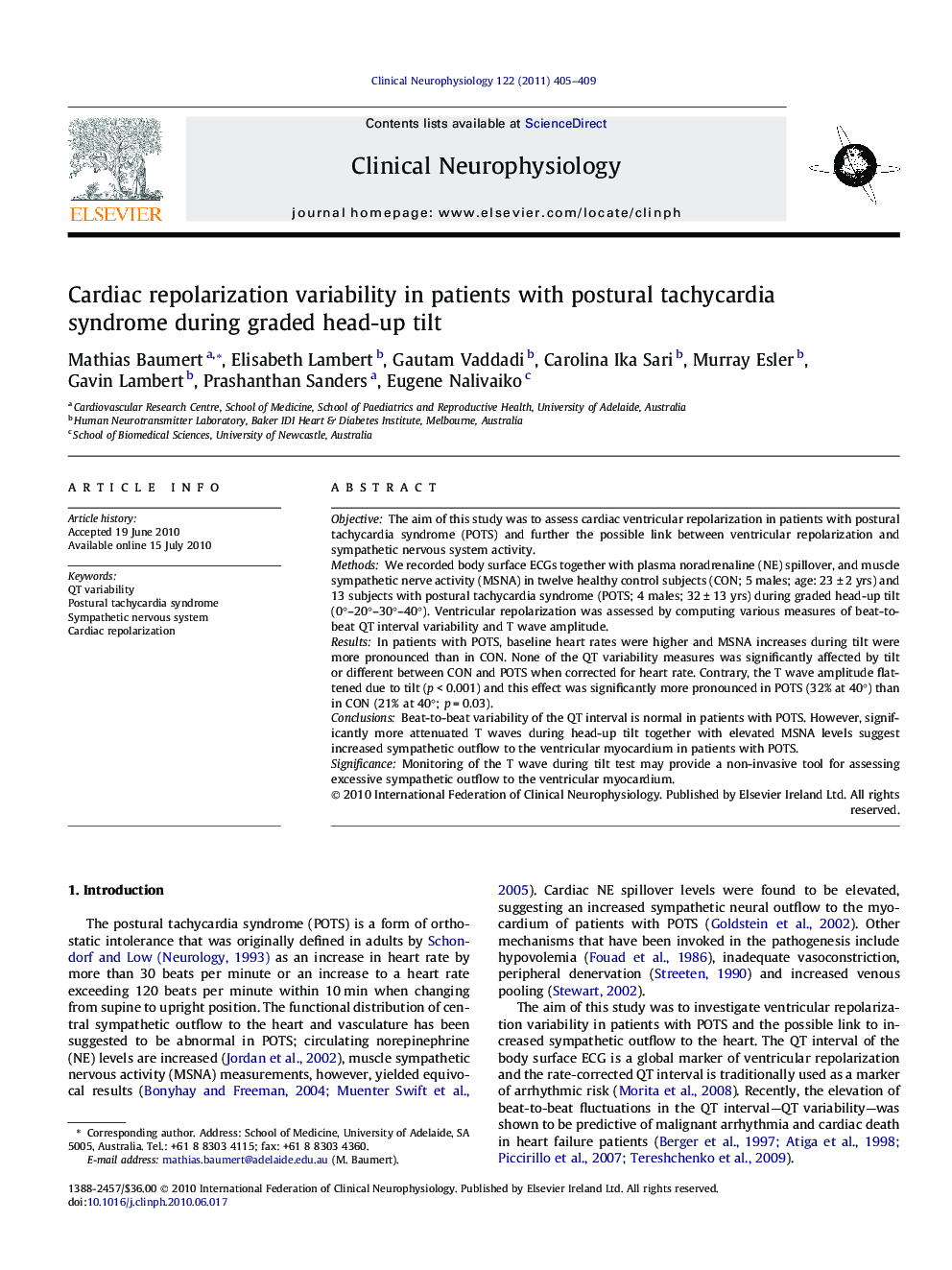| Article ID | Journal | Published Year | Pages | File Type |
|---|---|---|---|---|
| 3044994 | Clinical Neurophysiology | 2011 | 5 Pages |
ObjectiveThe aim of this study was to assess cardiac ventricular repolarization in patients with postural tachycardia syndrome (POTS) and further the possible link between ventricular repolarization and sympathetic nervous system activity.MethodsWe recorded body surface ECGs together with plasma noradrenaline (NE) spillover, and muscle sympathetic nerve activity (MSNA) in twelve healthy control subjects (CON; 5 males; age: 23 ± 2 yrs) and 13 subjects with postural tachycardia syndrome (POTS; 4 males; 32 ± 13 yrs) during graded head-up tilt (0°–20°–30°–40°). Ventricular repolarization was assessed by computing various measures of beat-to-beat QT interval variability and T wave amplitude.ResultsIn patients with POTS, baseline heart rates were higher and MSNA increases during tilt were more pronounced than in CON. None of the QT variability measures was significantly affected by tilt or different between CON and POTS when corrected for heart rate. Contrary, the T wave amplitude flattened due to tilt (p < 0.001) and this effect was significantly more pronounced in POTS (32% at 40°) than in CON (21% at 40°; p = 0.03).ConclusionsBeat-to-beat variability of the QT interval is normal in patients with POTS. However, significantly more attenuated T waves during head-up tilt together with elevated MSNA levels suggest increased sympathetic outflow to the ventricular myocardium in patients with POTS.SignificanceMonitoring of the T wave during tilt test may provide a non-invasive tool for assessing excessive sympathetic outflow to the ventricular myocardium.
